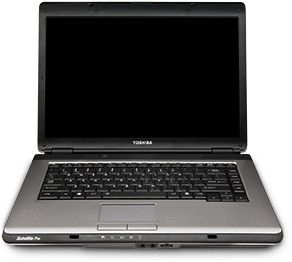From our front-page news:
Is anyone at this point surprised that Intel's processors are found in the majority of notebooks on the market? Doubtful. Where the ultraportable is concerned, as the Nanotech blog points out, Intel has a huge monopoly. Of course, what else would you expect? Intel is currently churning out the most efficient chips on the market, so it makes business sense to continue shoving them in the machines.
Currently, AMD's processors are mostly found on sub-$1,000 notebooks, which, while somewhat underpowered, tend to be feature-rich at the given price-range. But with the upcoming Puma chipset, AMD is looking to shake things up a bit, and they very well could. Puma is based on a 65nm process and enables DirectX 10, HDMI with HDCP and could even include DisplayPort.
Most notably, the new chipset opens up support for Hybrid Crossfire, which allows a separate GPU to be installed other than the integrated solution. This means lower power consumption during normal use, but better gaming performance when plugged in, since the two GPUs will essentially work together to deliver a higher average FPS.
Puma might still be a little ways off, but we'll no doubt be seeing many notebooks utilizing the new chipset at next month's Computex in Taiwan.
<table align="center"><tbody><tr><td>

</td></tr></tbody></table>
Puma-based notebooks will be based on the AMD Turion X2 Ultramobile processor which uses Hypertransport 3 bus for extremely fast (20.8GB/s) data transfer between CPU and chipset, power management that can turn whole segments of the chip off on a millisecond-by-millisecond basis to save power. Intel is only now catching up to AMD’s use of Hypertransport after many years, with its competing QuickPath technology, which will debut in its Nehalem-class Core 2 Duos later this year.
Source: APC Mag
Currently, AMD's processors are mostly found on sub-$1,000 notebooks, which, while somewhat underpowered, tend to be feature-rich at the given price-range. But with the upcoming Puma chipset, AMD is looking to shake things up a bit, and they very well could. Puma is based on a 65nm process and enables DirectX 10, HDMI with HDCP and could even include DisplayPort.
Most notably, the new chipset opens up support for Hybrid Crossfire, which allows a separate GPU to be installed other than the integrated solution. This means lower power consumption during normal use, but better gaming performance when plugged in, since the two GPUs will essentially work together to deliver a higher average FPS.
Puma might still be a little ways off, but we'll no doubt be seeing many notebooks utilizing the new chipset at next month's Computex in Taiwan.
<table align="center"><tbody><tr><td>

</td></tr></tbody></table>
Puma-based notebooks will be based on the AMD Turion X2 Ultramobile processor which uses Hypertransport 3 bus for extremely fast (20.8GB/s) data transfer between CPU and chipset, power management that can turn whole segments of the chip off on a millisecond-by-millisecond basis to save power. Intel is only now catching up to AMD’s use of Hypertransport after many years, with its competing QuickPath technology, which will debut in its Nehalem-class Core 2 Duos later this year.
Source: APC Mag
